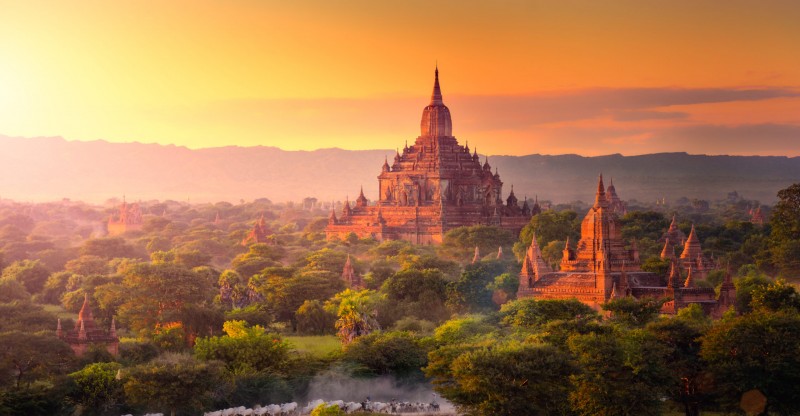
As we celebrate India's Independence Day, it's an opportune moment to revisit the lesser-known stories that are woven into the tapestry of our struggle for freedom. One such tale is that of Burma's separation from India, a significant event that has often been overshadowed by more prominent historical narratives. Burma, located to the east of India, was an integral part of British India during the colonial era. The region, rich in culture and diversity, played a pivotal role in shaping the history of the subcontinent. However, its journey toward independence followed a distinct path from that of India.
The story of Burma's separation begins with the arrival of the British in the 19th century. As part of their imperial expansion, the British gradually established control over different regions of India, including present-day Burma. Over time, Burma became a province of British India, with economic resources being exploited and administrative structures being imposed by the colonial rulers. Despite being under the same colonial yoke, Burma and the rest of India had different cultural, linguistic, and historical contexts. The push for independence began to gain momentum in both regions, but the aspirations and strategies differed due to their unique circumstances.
As India's struggle for freedom intensified, Burma too witnessed its own movements and uprisings against British rule. In the aftermath of World War II, when the British Empire was weakened and global sentiments favored decolonization, Burma's quest for self-determination gained traction. The pivotal moment came in 1947 when India was on the cusp of gaining independence. The Indian Independence Act of 1947, which led to the partition of India, also granted Burma the choice to either remain part of the Indian Union or opt for a separate destiny. In a crucial referendum held in 1947, the people of Burma voted for separation from India, heralding their own journey toward independence.
On January 4, 1948, Burma officially became an independent nation, marking the end of its colonial past and the beginning of a new chapter in its history. The separation was marked by celebrations, hopes, and dreams of a better future. While India's tryst with destiny was marked by the leadership of Mahatma Gandhi, Jawaharlal Nehru, and other stalwarts, Burma's struggle had its own heroes. Aung San, a prominent Burmese leader, played a vital role in negotiating with the British and shaping Burma's path to independence. Tragically, he was assassinated before he could witness the realization of his efforts.
As we commemorate India's Independence Day, let us also remember the story of Burma's separation from India. While our nations embarked on distinct paths, both shared the common goal of liberation from colonial rule. Burma's journey reminds us that freedom is a universal aspiration, transcending borders and uniting people in their pursuit of a brighter future. In honoring the struggles and sacrifices of both nations, we pay homage to the spirit of independence that continues to inspire generations. Just as India and Burma unfurled their flags of sovereignty, let us remember that freedom is a beacon of hope that shines brightly, guiding us toward progress, unity, and prosperity.